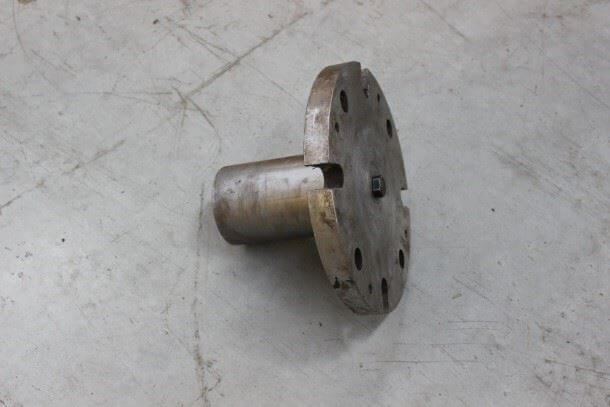The UK power station operator required a repair solution that would provide extremely robust protection against abrasion and significantly increase the working life of the equipment. The maintenance specification called for repair and protection of corroded pipe spools using a hard-wearing epoxy material. (Learn more about these types of repairs in Flange Corrosion Repair & Protection: Isolating the Sealing Face.)
The pipe spools are situated in the flue gas desulfurization (FGD) unit, which removes harmful chemicals such as sulfur dioxide (SO2) from coal exhaust gases. (Related reading: Potential Causes of Corrosion in Pre-combustion and Hydrogen Production Process Plants.) The gases are passed through limestone slurry, which "scrubs" out the SO2 and creates calcium sulfate (CaSO3) and carbon dioxide (CO2) byproducts. The limestone slurry, now containing highly abrasive limestone material and corrosive calcium sulfate, is then pumped away for further treatment. It is at this step in the process where the pipework is subjected to highly erosive and corrosive media.
Composite Repair Application Method
The coating applicator, Pump Supply & Repair Group, had already carried out similar applications using Belzona polymeric materials for the same client. Previous applications of the hard-wearing epoxy resulted in a 50% increase in the usable life of pipework, therefore the same repair system and application method was specified again.
Belzona 1812 (ceramic carbide) was chosen to repair and protect the 12 existing pipe spools. This composite material combines extremely hard, closely packed abrasion-resistant ceramic aggregates in a polymeric binder, making it suitable for the maintenance of substrates damaged by particle abrasion. The durable technology fortifies, in this case, 4-inch (10.16 cm) pipe interiors, ensuring that they will remain protected when subjected to abrasive limestone slurry.
First, the substrate was grit blasted to remove all possible contaminants and to achieve Surface Cleanliness Standard Sa2½ with a 75µ profile.

Figure 1. Pipe spool after grit blasting.
Following surface preparation, the pipes were then salt tested to confirm acceptable levels of contamination. In order to reduce application time and increase lining thickness accuracy, the applicator manufactured a flanged mold with a machined insert specifically for the job.

Figure 2. A pipe mold was manufactured to aid proper coating application.
This mold was then bolted onto the pipes prior to coating, allowing the coating technician to uniformly fill all spaces with Belzona 1812 while ensuring the internal dimensions were kept to specification. Finally, the pipes were machined true using a diamond tipped tool.

Figure 3. The coating system was cured with the mold still inserted.
Steve Smith, an engineer with Pump Supply & Repair Group, said this hard-wearing coating material saves the considerable cost of downtime that would otherwise be needed for the removal and replacement of pipework:
“Due to its molecular structure making it extremely resistant to both erosion and corrosion, the Belzona material was able to not only repair the damaged equipment, but also significantly increase its life expectancy, too.”